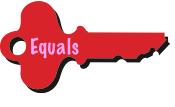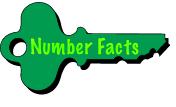 |
 |
 |
 |
 |
||||||||||
 |
||||||||||
for division, they must also know how to subtract. Additionally, to understand what they are doing when they multiply or divide, they need to know how a base 10 numeration system works, but they learned that in adding and subtracting in Fair Lands™, which means that they do not need to learn how to multiply and divide in different lands, so please refrain from teaching them how. (A flaw with the New Math of the 1960s was to overdo working in different bases.)
Once students are competent with the multiplication and division facts and can add and subtract, they know all they need to know to learn how to multiply and divide. In ALL KIDS CAN LEARN ARITHMETIC, the instructional sequence for teaching multiplication is or rods (as a precursor to Lattice Multiplication), , and . Math worksheets to assist with the instruction are included in the ebook Multiplication and Division Made Easy.
YouTube video: (1:30)
YouTube video: (1:27)
YouTube video: (2:05)
For teaching division, it is the free (for understanding) and and .
YouTube video: (5:30)
YouTube video: (2:00)
YouTube video: (1:55)
YouTube video: (2:23)
Mastery of multiplication and division is expected in grade 3; however, the preparation for mastery is spread out over kindergarten, grade 1, and grade 2 by teaching the skip counting songs on , a CD available from , and how to use skip counting to figure out (and eventually “know”) the "times" table and the division facts.
• In kindergarten, the children learn the songs for the 2s (2, 4, 6, …, 20), 5s (5, 10, 15, …, 50), and 10s (10, 20, 30, …, 100) and how to use skip counting to figure out the multiplication and division facts for 2, 5, and 10.
• Likewise in grade 1 except for the songs for the 3s (3, 6, 9, …, 30) and 4s (4, 8, 12, …, 40) and the multiplication and division facts for 3 and 4.
• Likewise in grade 2 except for the songs for the 6s (6, 12, 18, …, 60), 7s (7, 14, 21, …, 70), 8s (8, 16, 24, …, 80) and 9s (9, 18, 27, …, 90) and the multiplication and division facts for 6, 7, 8, and 9.
Teaching the songs is pleasant duty, but be warned that some of them may get stuck in your head and have you humming them at odd times, like when you are trying to go to sleep. If the dances that come with the songs are also taught, math and movement become intertwined, thus making the math more meaningful and easier to remember.
In every textbook-based elementary school math program in American schools today, the multiplication and division facts are at best fiddled with at the end of grade 3 and then dumped on children in grade 4 with the times table and “backwards” multiplication for the division facts, like 45 ÷ 9 = 5 because 5 x 9 = 45. It has been that way since at least the 1950s and probably before then, which would be okay if children’s minds could soak up the times table in a few weeks or even months, but decades of good teachers trying to make that happen has never worked except for a few children, so the result is CRISIS MANAGEMENT for many children from grade 4 on. What is wrong with us? Why do we keep doing this?
Spreading out the teaching/learning of the number facts for multiplication and division over kindergarten, grade 1, and grade 2 is just common sense. When children enter grade 3 already knowing them or how to figure them out, their 3rd grade teacher can, in but a few days, teach the multiplication and division algorithms used in ALL KIDS CAN LEARN ARITHMETIC to every child. For grade 3 teachers and up whose students were not taught
CONTINUED: Next > | 1 | 2 | 3 | 4 | 5 | 6 | 7 | 8 | 9 | 10 | 11 | 12 | 13 | 14 | < Back






